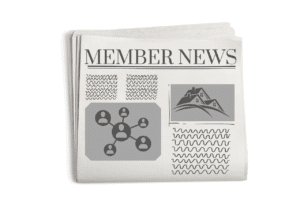For the first time ever, National Housing & Rehabilitation Association (NH&RA) hosted on February 18, 2015, a Public Housing Joint Venture Symposium to convene U.S. Department of Housing and Urban Development (HUD) representatives with more than 100 developers, syndicators, lenders, and other members of the affordable housing community. The one-day event preceded the 2015 NH&RA Annual Meeting at the Ocean Reef Club in Key Largo, FL.
The Symposium expanded on an ongoing conversation between HUD and NH&RA members about improving HUD programs and joint venture development opportunities by inviting in new participants and incorporating fresh perspectives. Event attendees had a unique opportunity to gain insight into the progress and updates to key HUD programs, and were able to voice their concerns and questions to HUD representatives, as well as connect with peer organizations who are working on similar issues. These important dialogues provided HUD officials Greg Byrne, Mindy Turbov, and Susan Wilson with a deeper understanding of what affordable housing developers and owners, public housing authorities, syndicators, lenders, and others need to successfully participate in the programs they oversee.
The event began with a presentation from Mindy Turbov, who is the Director of HUD’s Choice Neighborhoods Initiative. Turbov invited attendees into a dialogue about the evolution of the Choice Neighborhoods Initiative (CNI) program, including CNI’s goals and plans for the future. Kenan Bigby (Trinity Financial, Inc.), Rodger Brown (Preservation of Affordable Housing), Sharon Wilson Géno (Ballard Spahr), and Milt Pratt (The Michaels Organization) joined Turbov on the panel to voice the needs and concerns of professionals engaged in Choice Neighborhoods transactions. The panelists discussed the exorbitant cost of submitting a grant application, difficulty coordinating all the required aspects of a CNI grant, uncertainly of planning grantees’ likelihood of receiving an implementation grant, and the inconsistent “feedback loop” provided by HUD reviewers.
The morning’s second panel looked at revitalizing and recapitalizing aging HOPE VI properties. With a considerable portion of HOPE VI properties approaching year 15 of the tax credit compliance period, the affordable housing community is faced with the challenge of deciding what’s next for these projects. Susan Wilson, HUD Director of Urban Revitalization – HOPE VI Division, and Greg Byrne, HUD RAD Coordinator, joined Bev Bates (The Community Builders), Claudia Brodie (McCormack Baron Salazar), Orlando Cabrera (Squire Patton Boggs), and Chris Hornig (Klein Hornig) to discuss issues how to deal with projects that have significant soft debt with accrued interest, whether there is residual value for private owners after year 15, opportunities and challenges involved with working alongside Public Housing Authorities in these efforts, and issues surrounding RAD conversions.
After digesting the morning’s sessions over a networking lunch, the Symposium continued in the afternoon with an update from NH&RA’s RAD User Group Update. HUD’s Greg Byrne offered his insights into the progress of the RAD program and fielded questions from panelists Jerry Anderson (The Gill Group), Bernie Husser (The Richman Group Affordable Housing Corporation), Lopa Kolluri (Pennrose Properties), and Deborah VanAmerongen (Nixon Peabody). The group discussed HUD’s plan for addressing the backlog of RAD applications following the recent decision to lift the cap on the number of RAD units, as well as challenges developers, owners, and other professions are facing when closing RAD deals, including Davis Bacon on second component RAD conversions, environmental/Phase 1 requirements, and solutions for balancing relationships and expectations between private owners and PHAs. Pointing to the lifted RAD cap, Greg Byrne affirmed that HUD is taking steps to encourage the conversion of public housing under RAD. There are currently roughly 600,000 units untouched by the program.
For the final session of the symposium, Mike Andrews (Home Forward), Efrem Levy (Reno & Cavanaugh), and Sheryl Putnam (Nan McKay & Associates) examined HUD’s proposed rule on demolition and disposition of public housing projects and the conversion of public housing to tenant-based assistance. The panel presented the challenges posed by the rule, such as potential conflict with fair housing regulations, as well as rule’s potential benefit of being more predictable and consistent with RAD regulations.
The Symposium made clear that joint venture opportunities are a growing opportunity for affordable housing developers, owners, syndicators, lenders, and others. NH&RA will ensure the lines of communication established and strengthened at the event remain open as these key HUD programs grow and evolve. If you would like to join NH&RA or if you have suggestions for continuing this productive discussion of public housing joint venture opportunities, please contact us at (202) 939-1750 or info@housingonline.com.
